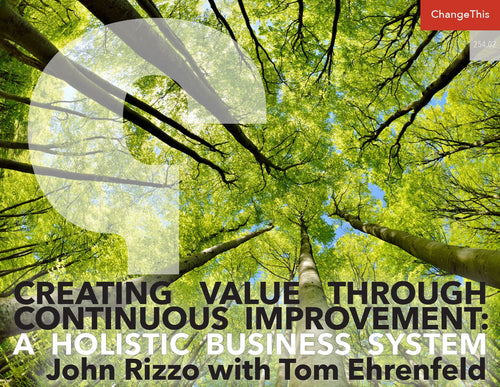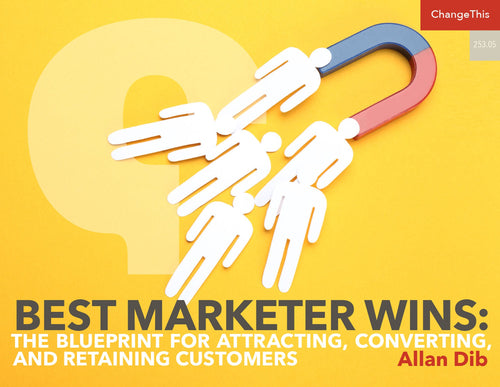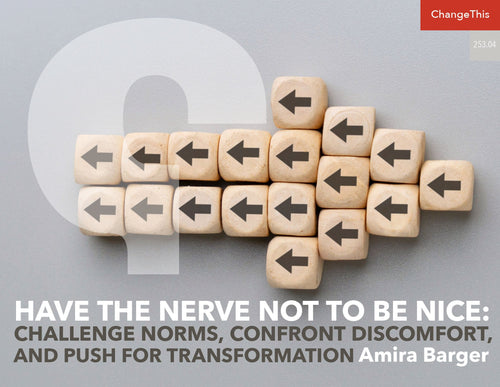Redefining Career Development: Growth Beyond, Between, and Beside Promotions
If there’s one phrase in business that needs a reboot more than any other, it’s ‘career development.’
Evoking images of ladders, pathways, and upward trajectories, these two words tap deep-seated and frequently unconscious expectations around career success that were established decades ago during a different time.
Employees and leaders alike are wrestling with these past images of career success in light of a rapidly changing workplace. The expectation of a singular, defined path leading ever upward simply doesn’t square with today’s ever-shifting, frenetic reality.
Promotions aren’t the only—and frequently not even the desired—way forward.
And yet, in the absence of an alternative way to think about career development, the outdated expectation that progress means taking a different role or making a career move persists. So we need a new model—one that’s better aligned with today’s dynamic, employee-centric environment. Now is the time to reframe career development.
HALT THE HIJACK
There’s something about the expression ‘career development’ that hijacks our brains. It conjures up old-school visions of a time when hierarchy and promotions defined the meaning of work and served as the currency of success.
Contemporary organizations, however, no longer operate this way. In today’s global marketplace, we are living longer and working longer. Organizations are flatter. Mid-management ranks have been dramatically delayered. Key positions remain unfilled longer. External candidates are frequently favored over internal ones. And the loss of geographic limitations within remote organizations only increases competition for available roles.
But it’s not just the business landscape that’s changing. Our relationship with work is changing, too. The average person can expect to hold more than 12 jobs over the course of their life. The average tenure in a role is now down to four years. And a significant portion of the workforce is comprised of contractors and contingency workers. The gig economy and the resulting “side hustle” culture are changing employee expectations and behavior.
Continuing to equate career development with promotions only perpetuates the expectation that growing means going somewhere—to a new role, position, or title—options that are highly restricted and in short supply in most organizations. The context then becomes all about scarcity, constraints, lack of opportunity, and limited potential, all of which undermine both growth and a sense of satisfaction at work.
Managers and leaders are in a powerful position to change this dynamic. To demote or downgrade promotions as the primary definition of success. To update development expectations by shifting career conversations to what’s possible beyond, between, and beside promotions.
TODAY’S DEVELOPMENT DESERT
Make no mistake, employees crave development. And, in its absence, they are voting with their feet. Study after study confirms development and growth opportunities are among the most often-cited factors in workers’ decisions to leave a job.
- “Room for growth” is one of five keys to employee commitment and retention, according to the Hay Group.
- The Cengage Group, which provides education and technology services, surveyed 1,200 workers who were among the millions of people who resigned from their workplaces during the two-year period of the pandemic. For 83 percent, “I no longer feel like I am growing in my position” was a key reason for bailing.
- Even among people who like the work they do, stagnation can be a disincentive to stay in a job. According to a report issued by Humu, a leadership development company, people who don’t see opportunities for development and growth are nearly eight times more likely to think about leaving their companies.
- LinkedIn’s study of more than 6,600 working professionals found that 94 percent of employees would stay with their current organizations if they believed an investment was being made in their development.
- And 70 percent of US employees report being at least somewhat likely to leave their employers for another with a reputation for investing in employee learning and development, according to a Harris Poll study conducted on behalf of Yoh.
In today’s rapidly changing and globally competitive marketplace, retaining top talent is a critical priority. Effective development appears to be a key ingredient that’s missing in many cases. But how much of this dissatisfaction is based upon outdated expectations of career development? Are employees disappointed because they’re confusing development with promotions? If the only opportunities for growth that are recognized take the form of new roles and positions, then no wonder so many are joining the Great Resignation.
Greater satisfaction, engagement, and retention depend upon leaders reframing and redefining career development, by focusing on what’s possible beyond, between, and beside promotions.
TAKING BACK CONTROL
The prevailing ‘career development = promotion’ sentiment is detrimental for yet another reason. It robs control of career development from managers and employees, who generally have little influence over how, why, or when positions are handed out.
New roles and/or promotions are NOT your only—and certainly not your most motivating— tool for growth.
Managers and employees enjoy a much broader developmental sphere of influence than they may realize. Opportunities to leverage talents, build skills, and promote learning are nearly endless. And, unlike promotions, these opportunities are squarely within the domain of managers and employees, who work together to make development happen.
When we reframe career development, there are abundant opportunities for growth and engagement that are deeply meaningful to employees and beneficial to the organization. Let’s explore three ways leaders can help employees by tapping possibilities, building portfolios of meaningful experiences, and facilitating greater peace of mind.
POSSIBILITIES OVER PROMOTIONS
Refocusing career development in terms of what’s beyond, between, and beside promotions creates an immediate and profound shift. Instead of focusing on future roles and moves, attention is placed on the present. One’s current role is suddenly seen as the sandbox within which to experiment, learn, and grow. And in that moment, possibilities flourish.
Managers and employees can mine what they control—the current job—for rich opportunities for development in the here and now. No new roles. No organizational signoff. No formal programs. Just two people collaborating to engineer experiences that will deliver desired growth outcomes. Here are just a few of these powerful possibilities.
CULTIVATE CONTRIBUTION | As humans, we have a deep desire to be of service and make a difference. And when approached with intention, this can deliver powerful development just by examining an employee’s current role. The simple question, ‘Where are there opportunities to add greater value?’ highlights the nooks and crannies of our jobs that frequently go unnoticed—and unaddressed. Finding those opportunities and determining what there is to learn from them not only benefits the individual but the organization as well. (A word to the wise: Just make sure there’s a clear breadcrumb trail between the proposed contribution and development goals. Employees have the well-honed ability to detect additional workload masquerading as a ‘growth opportunity’ a mile away.)
FACILITATE VISIBILITY | Attending events, showcasing talents, representing the team, and hobnobbing with key leaders are all opportunities for employees to expand their perspectives, test their mettle in different settings, and learn from others. Helping others enhance visibility costs nothing—except perhaps a little attention to the individual and their desire for growth—and can offer visceral learning not available through other means.
EMBRACE EXTRACURRICULARS | Given the blurring of lines between work and home, why not leverage what employees might be engaging in outside of the workplace: volunteer efforts. Encourage them to use these activities to simultaneously give back and take back new skills and abilities. Help them think strategically about the growth they desire and find ways to pursue it outside of work. But don’t stop there. Make sure to address these activities during one-on-ones and informal coaching conversations. Imagine the connection, trust, and loyalty this kind of ‘whole person’ development can inspire.
BANISH TRADITIONAL BOUNDARIES | In the spirit of seeking novel possibilities for growth, what about exploring up- and downstream partnerships for development? How might relationships with suppliers, vendors, and customers be used for development? Are external rotational assignments a possibility? Meaningful opportunities for growth don’t have to be constrained to one organization and may require that we look outside the usual box.
When we reframe career development, de-emphasize future promotions, and help people take advantage of current conditions to drive their growth, the picture becomes clearer and the possibilities exponentially more plentiful.
IN PURSUIT OF PORTFOLIOS
In today’s dynamic environment, many people are open to trading the traditional career trajectory for a collection of experiences that interest them and support a more flexible way of working. The gig economy and side hustles certainly play into this, with some organizations sanctioning and even encouraging these sorts of activities. “I think everyone should be able to pursue [side hustles] and find out what they’re good at,” Michael Hudson, CEO of GameBake, told CNBC in 2021. The company’s chief commercial officer concurred saying, “It helps [people] to learn more in different areas and different markets. Allowing this kind of transparency can help employees collect the kind of experiences and skills that can help them in their organizational work.”
Leaders are in a unique position to help people appreciate the value of strategically gathering key experiences, skills and abilities—and putting them together into a comprehensive portfolio that serves them now and into the future.
Start with a commitment to conversation or, more accurately, a commitment to asking questions that cultivate ongoing conversation. It’s as simple as asking: What kind of work do you want to do? What interests you most? What would you like more of in your work? Where are there skill or experience gaps you’d like to address? What would you like to learn? What’s most important to you? What are your goals? What are you yearning to accomplish or achieve?
Conversations like these go deep. They require psychological safety, trust, and mutual commitment to understanding and action. But they surface the data required to identify and implement any number of portfolio-packing possibilities.
SAMPLE THE SPICE OF LIFE | Variety is at the heart of any well-rounded portfolio. So, invite new assignments into the realm of the employee’s current job. Fortunately, there’s likely plenty of real work floating around that needs to get done—and some of it might offer precisely the experience someone needs to grow. Are there strategic assignments that align with what an employee wants to add to their portfolio? Can you shuffle tasks around and job-craft in a way that allows employees to do more of what serves their development? Could you offload a task that might be routine to you, but could offer a rich experience to someone else (and maybe even in the process create the space for you to learn/do something new as well)? Looking at day-to-day work through the lens of how different activities might activate employee learning is key to helping them create a robust and well-rounded work portfolio.
FORGET FOREVER | Nearly 10 years ago, Reid Hoffman, co-founder of LinkedIn, suggested the idea of “tours of duty”. He suggested that short (2 to 4-year) employer/ employee contracts were a more appropriate model and possible replacement for the idea of lifelong employment. You can help those around you who are interested in portfolio- building by jointly imposing an expiration date—a time when they (and you) will be ready to move on. As scary as it sounds, knowing there’s a deadline amplifies urgency and creates a concentrated experience of growth and contribution. (And a term of the development contract can certainly include having the employee help you find and train a replacement when they’re ready to expand their portfolio with the next experience.)
VENTURE INTO VOIDS | That white space within an organization, the blurry boundaries between and among departments, the roadblocks in the customer’s journey, and the needs that are vaguely known but clearly unowned offer a rigorous informal course of study in complexity, collaboration, creativity, execution, and more. Voids can be exactly what many employees need to strategically expand their portfolios. And the good news is that in most organizations, there are plenty to go around. Got a systems glitch? Interdepartmental pinch points? Recurring customer complaint? Processes that have never been optimized? A great opportunity that you simply don’t have the time to address? Opportunities like these offer valuable lessons that could never be learned within the context of the daily grind. And importantly, they enable employees to engage in unique experiences and generate impressive results to further populate their portfolios.
PRIORITIZING PEACE OF MIND
Development of the whole person rather than just one facet of an employee’s life is the new expectation and measure of success for many people today. Let’s face it, the past two years have changed us. Many of us have engaged in a period of deep reflection, soulsearching, and re-evaluation of what matters most. As the lines between personal and professional lives grow ever blurrier, traditional tradeoffs have become less tenable. COVID epiphanies have forever altered the relationship many people have with work, and we are called upon to be unapologetically human as we respond.
Work/life balance—already a topic of growing interest pre-pandemic—has become nonnegotiable for a large swath of the population. Daily news reports feature the growing number of workers who are giving up more money, perks, prestige, and promotions for opportunities that offer less stress, more flexibility, and overall well-being.
Might peace of mind replace promotions as the new definition of career success for many employees?
With unprecedented burnout, anxiety, and stress facing individuals and organizations today, peace of mind is top of mind as a work priority for many employees. No longer willing to endure the risks associated with the charge up the hierarchical food chain, people are replacing their vision of how careers develop with a more contemporary one informed by core values and evolving priorities. What they’re looking for is a different experience of work, one that delivers intangibles like contentment, confidence, and greater levels of choice and flexibility.
CONTENTMENT | Today’s employees, from generation Z to boomers, are looking for their jobs to new and different jobs for them. Many have become less concerned with where they exist on the org chart and more concerned with the quality of their existence. Meaning. Purpose. Ease. Joy. Balance. These are what employers must deliver today to create an experience that resonates with and retains talent.
CONFIDENCE | My own research found that confidence is in the top 50 percent of the development dimensions that are most interesting to employees. People want that feeling of mastery and self-assurance. They want to know they can count on themselves and their ability to deliver consistent results. And, while they may be driven by intrinsic motivators, they also crave and value external recognition of their accomplishments.
CHOICE | Autonomy is a fundamental human need. And this has been amplified over the past two years. Employees are ready to take greater control of their experience at work. Where it happens. When it happens. How it happens. And there are enormous opportunities for development as we support this power shift. Greater and more sophisticated decision-making demands a broader perspective, a more strategic lens, and heightened skills—a form of development that many employees prioritize over the traditional climb up the corporate ladder.
The beauty of reframing career development to encompass possibilities, portfolio building, and greater peace of mind at work is that leaders and employees have the power to make it happen. Whereas discussions of promotions and moves frequently lead to ‘no’, managers can say ‘yes’ to these alternative avenues for development. And employees can say ‘yes’ to the growth they desire.
REFRAME FOR REAL RESULTS
Leaders today are being called upon to rewrite the rules of business. Why not rewrite one of the most important practices of all while you’re at it? Why not re-write the rules of career development?
It’s time to update expectations and redefine what’s possible. It’s time to position positions as just one of the many experiences of progress and success. It’s time to reframe career development in contemporary and sustainable terms by shifting our focus to what’s beyond, between, and beside promotions.
ABOUT THE AUTHOR
Julie Winkle Giulioni is a champion for workplace growth and development and helps leaders optimize talent and potential within their organizations with consulting, keynote speeches, and training. Julie is the co-author of the international bestseller Help Them Grow or Watch Them Go: Career Conversations Organizations Need and Employees Want. She is a regular columnist for Training Industry magazine and SmartBrief and contributes articles on leadership, career development, and workplace trends to publications including The Economist. Named by Inc. magazine as a Top 100 Leadership Speaker, Julie’s in-person and virtual keynotes and presentations offer fresh, inspiring, yet actionable strategies for leaders interested in their own growth and supporting the growth of others. Her firm, DesignArounds, creates and offers training to organizations worldwide and has earned praise and awards from Human Resource Executive magazine’s Top Ten Training Products, New York Film Festival, Brandon Hall, and Global HR Excellence Council.











































